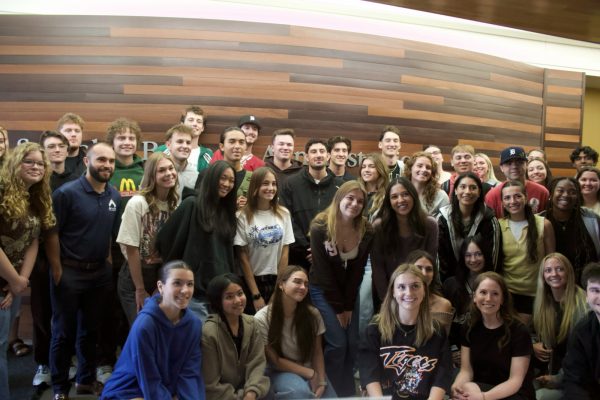Rolling into the Future
Since 1907, the North American Auto Show has been a staple for Detroit, only taking a few years off during World War II.
The show has increased in popularity and is now attended by car enthusiasts from around the globe.
Greg Miller, a senior design engineer for Faurecia, attends the show every year and sees the concept cars as examples of what he could be working with in the future.
“I find it interesting to study the concept cars because sometimes they are showing you what the production version of a future cars will look like and sometimes it’s just styling direction,” Miller said. “I see advancements being made in auto construction.”
He and Rod Price, an automotive technician for General Motors, have noticed more fuel-efficient and electric cars at the show.
“There are more and more hybrids and energy efficient vehicles,” Price said. “Gas prices are high so efficiency is a must.”
Miller said he shared the same hopes for more efficient cars.
“More recently, automakers have realized that electric motors can give a car performance gain as well as economical,” Miller said. “I like the idea of buying a purely electric performance car — a good trend going forward.”
Auto professionals are not the only people affected by new car trends. The technologies displayed at the auto show this year affect college students, as well.
After all, students will be the ones designing and driving these cars when they become popular.
When a few Oakland University students were asked if they drive American-made cars, they all said yes.
While the auto show does showcase some foreign brands, American cars have the spotlight.
It seems these are the cars many OU students are driving, and will continue to drive in the future.
When those same students were asked if they care about the industry changes in gas mileage, electric engines and design, the majority
expressed interest in mostly
gas efficiency and electric options.
Most said they enjoyed the idea of the economically sound hybrids because they are more environmentally friendly, but also because they can save drivers money.
Despite showing interest in the industry side of things, not many of the students said they would want to attend the show.
“I do not know much about cars other than they get me from Point A to Point B,” said sophomore Abby Mandley. “If I do go, it will probably be because someone else dragged me to it.”
While it doesn’t seem Oakland students will be going to the show, more than 18 million people have attended for business and/or pleasure over the years.
Miller admitted that while attending can be beneficial for his work, he goes because he loves to see the cars and learn about them.
After all, top-of-the-line cars may be hard on the wallet, but they aren’t too hard on the eyes.





